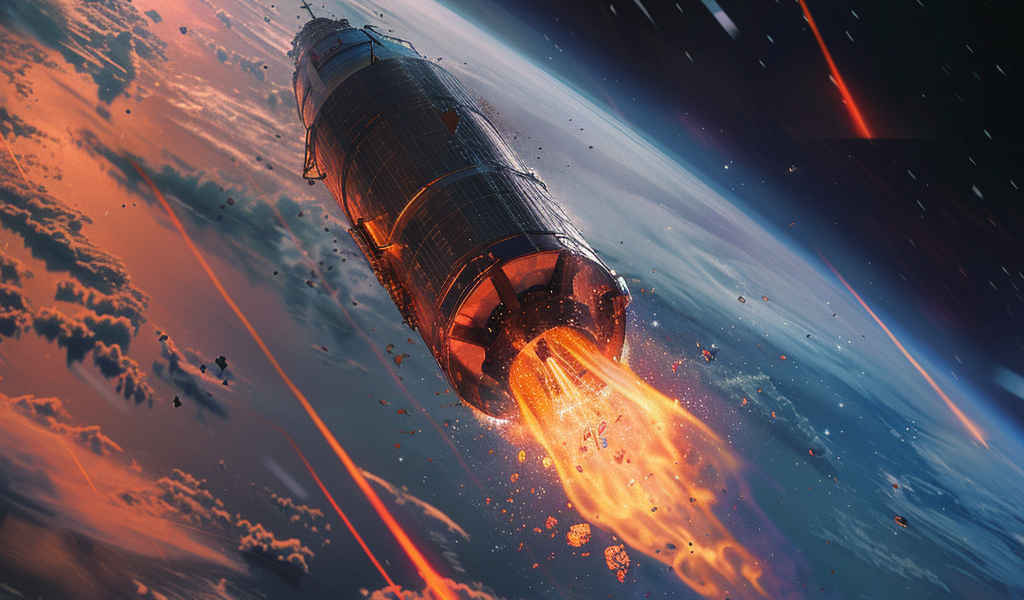Understanding Spacecraft Reentry: ESA’s Draco Mission
As humanity continues to explore the cosmos, the issue of space debris has become increasingly pressing. Over the past 70 years of spaceflight, approximately 10,000 intact satellites and rocket bodies have reentered the Earth’s atmosphere, with many more expected in the future. Despite the frequency of these events, our understanding of what occurs during the final moments of a satellite’s descent remains limited. To address this knowledge gap, the European Space Agency (ESA) is launching the Destructive Reentry Assessment Container Object (Draco) mission.
The Draco mission aims to gather unprecedented measurements during the reentry and breakup of a satellite. This innovative mission will utilize a specially designed capsule that is engineered to withstand the intense conditions of reentry. The capsule will transmit valuable telemetry data shortly after the satellite’s destruction, providing insights that have never been captured before.
Recently, the ESA signed a contract with Deimos, marking the beginning of the development phase for the Draco satellite. This initial contract is valued at €3 million, setting the stage for a small and rapid design-to-launch mission, with liftoff planned for 2027.
Mitigating Space Debris
One of the primary objectives of the Draco mission is to contribute to the ongoing efforts to manage and mitigate space debris. As the number of satellites in orbit increases, it becomes crucial to remove defunct satellites promptly after their operational life ends. ESA is dedicated to its ambitious Zero Debris approach, aiming to halt the further creation of space debris by 2030.
To achieve this goal, satellites can be designed for controlled reentries, or, with additional effort, they may undergo assisted or targeted reentries. However, the most efficient method to comply with Space Debris Mitigation Guidelines is to create satellites that are ‘designed for demise’ from the outset, ensuring they disintegrate entirely upon reentry.
Recent images of the Aeolus satellite showcased its transition into space debris during an assisted reentry, highlighting the importance of this research.
Advancing Reentry Science
According to Holger Krag, the ESA Head of Space Safety, reentry science is a critical component of designing satellites for demise. He emphasizes the need for a deeper understanding of the processes involved when satellites burn up in the atmosphere and the validation of reentry models. The unique data collected by the Draco mission will play a pivotal role in guiding the development of new technologies aimed at creating more demisable satellites by the target year of 2030.
Environmental Impact of Reentries
Another vital aspect of the Draco mission is its focus on the environmental effects of satellite reentries. As the frequency of both satellite launches and reentries continues to rise, understanding the impact on the atmosphere is becoming increasingly important. By studying how spacecraft materials degrade and release particles in the upper atmosphere, scientists can gain insights into the by-products generated during reentry. This knowledge is essential for developing more sustainable spacecraft designs in the future.
Stijn Lemmens, the Draco project manager in the ESA Space Debris Office, notes that while collecting data from a satellite during its destruction is challenging, it is currently impossible to replicate the exact conditions on the ground. Although experimentation in wind tunnels can test various materials and spacecraft components at a limited scale, a comprehensive understanding of the reentry process requires real-world data.
Future of Space Safety
The Draco mission represents a significant step forward in our efforts to enhance space safety and mitigate the growing problem of space debris. By collecting critical data during actual reentry events, ESA aims to pave the way for the next generation of satellites that are not only more efficient but also environmentally responsible.
As the space industry evolves, initiatives like Draco will be instrumental in ensuring that our ventures into space do not compromise the integrity of the environment we cherish on Earth. With the launch set for 2027, the world eagerly anticipates the findings of this groundbreaking mission, which could redefine our approach to space exploration and sustainability.





